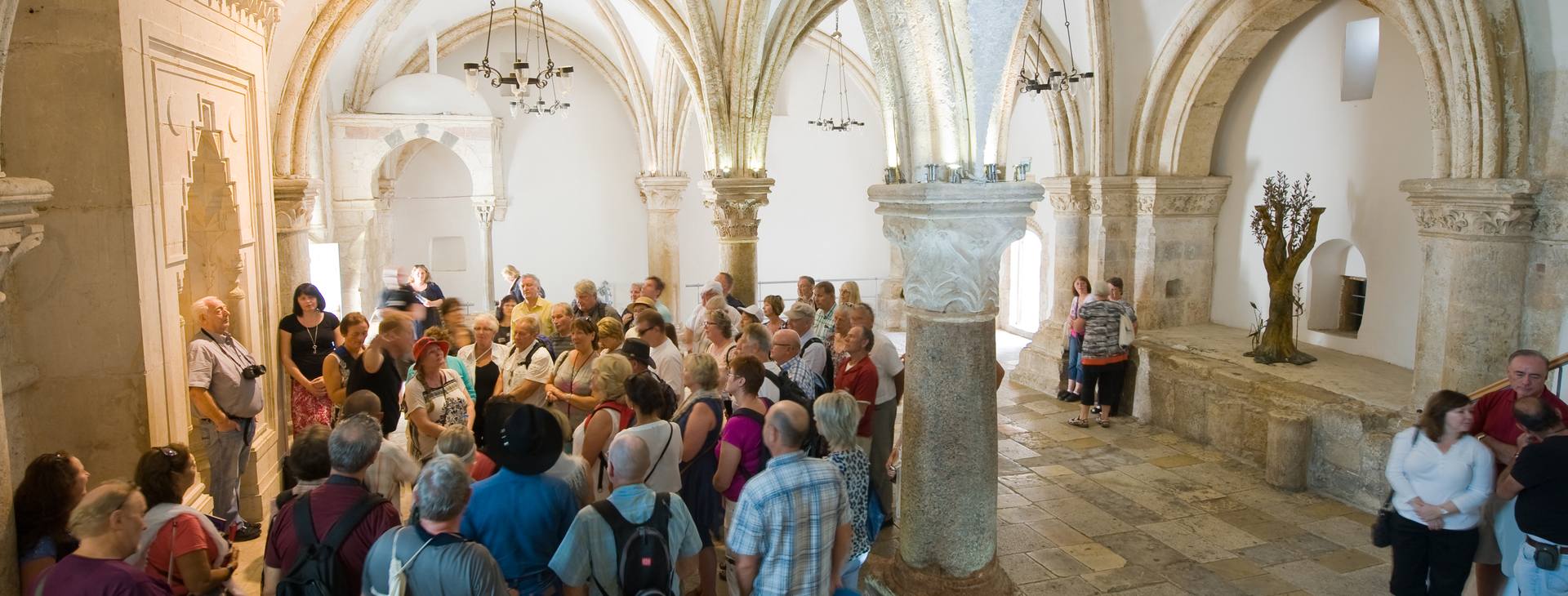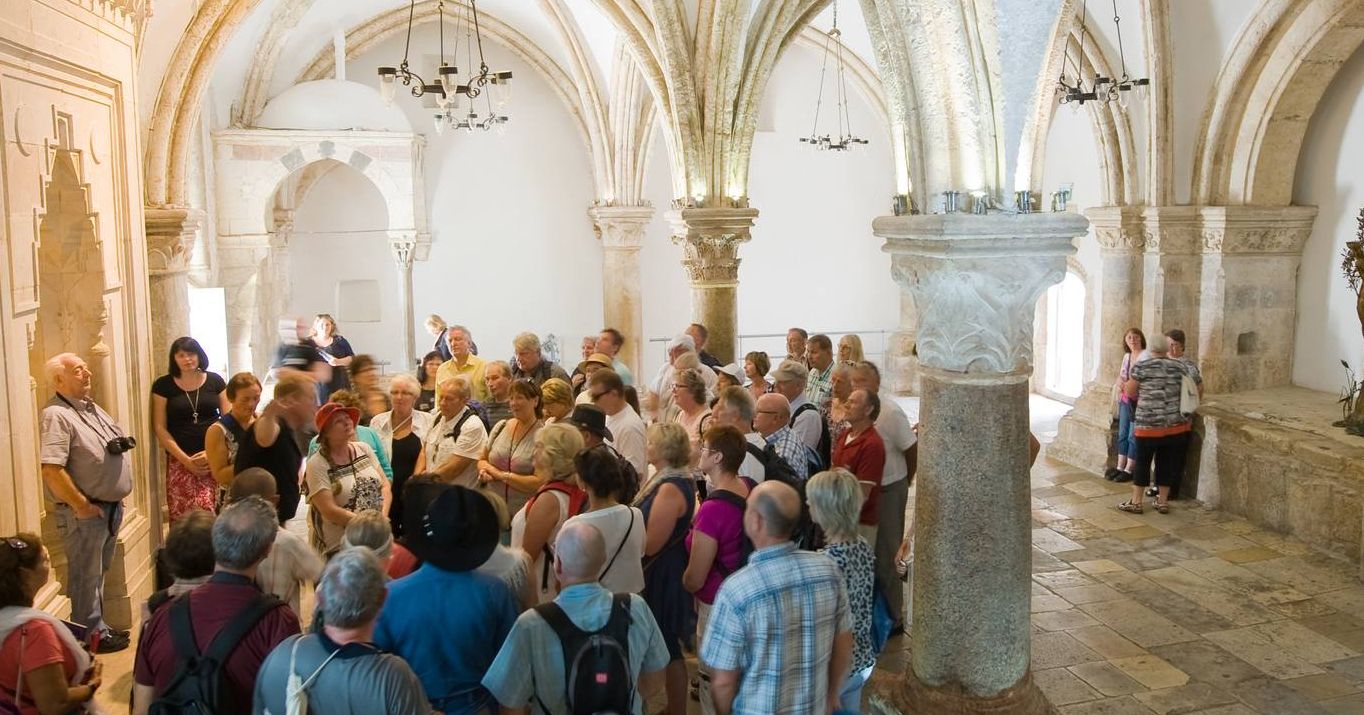The site is known in the Catholic Christian world as "Cenaculum" (or The Cenacle) derived from the Latin dining room, a memory of the Passover meal Jesus ate with his disciples on the eve of his death before he was captured and taken to trial. Today, visitors can see the renovated version of the hall and go up to the building's roof, which serves as a vantage point for the Dormition Church, the old city's walls, and Mount Olives. The site is open to members of all religions who wish to visit it.
About the last supper room
According to the New Testament, Jesus gave his disciples wine - a symbol of his blood that would be shed and gave them bread (probably matzah) - a symbol of his body that would be sacrificed for his believers. In one of the corners of the hall, under a small dome erected above a flight of stairs, stands a column with a decoration depicting a pair of pelican chicks prying their mother's heart. The female pelican, ready to sacrifice herself for her chicks, symbolizes in the Christian art of the Middle Ages the sacrifice of Christ for humanity.
According to Christian tradition, other significant events took place in this place: On the Pentecost after the crucifixion, the disciples of Jesus and his mother, Mary, gathered here. The Holy Spirit filled them, and they began to speak in different languages unknown to them until now, and with their help, they set out to spread Christianity among the nations. The day the Holy Spirit descended on the apostles is celebrated on the holiday of Pentecost (the day of Pentecost, from Pesach to Shavuot), the Christian holiday of Shavuot.
The hall we are in was built by the Crusaders about 800 years ago and was part of a large church built by the Crusaders over the remains of an early Byzantine church. The building got its current form after being renovated in 1335 by the Franciscan monks, the guardians of the Holy Land.
On the floor below us is the tomb of King David. According to the New Testament, Jesus is considered a descendant of the House of David. Due to King David's importance to Islam and Judaism, many conflicts arose around the entire complex, and it changed hands over the generations. We can sense the vicissitudes of history by looking towards the southern wall of the hall, where a Muslim prayer alcove - "Mihrab" - was placed, indicating the direction of prayer to Mecca. This is a late addition, probably from the 16th century when the Muslims expelled Franciscan monks from the Mount Zion compound, and the hall became part of a mosque.
The decorations beautifully illustrate the combination of cultures at this site: the pointed window sills are built in a Gothic-Christian style. In contrast, the window panes are decorated in a Muslim style. The beautiful pointed arches adorn the ceiling in Crusader-Gothic style, and inscriptions in stylized Arabic script adorn the wall.
Since 1948, the State of Israel has taken possession of the holy places on Mount Zion - including this hall. The mass held here by Popes John Paul II and Benedict XVI illustrates the holiness that Christianity attributes to this site.













